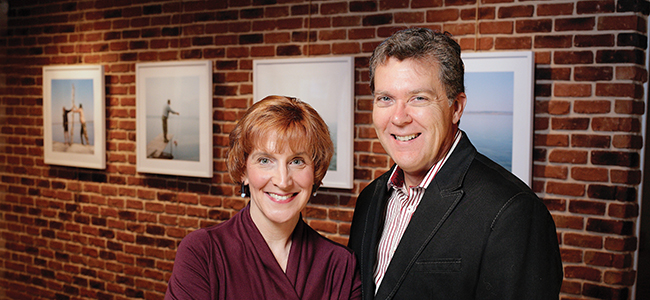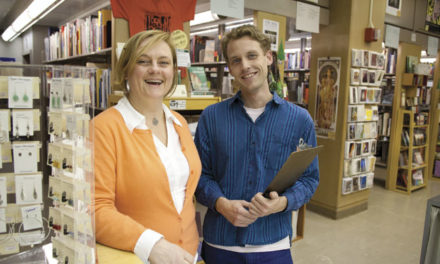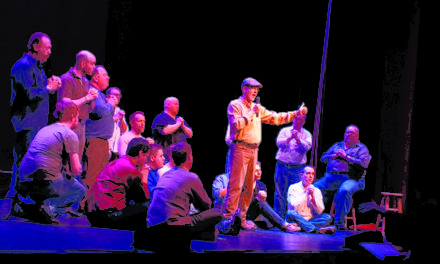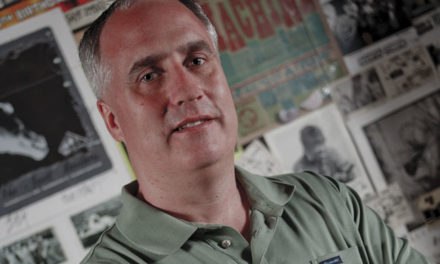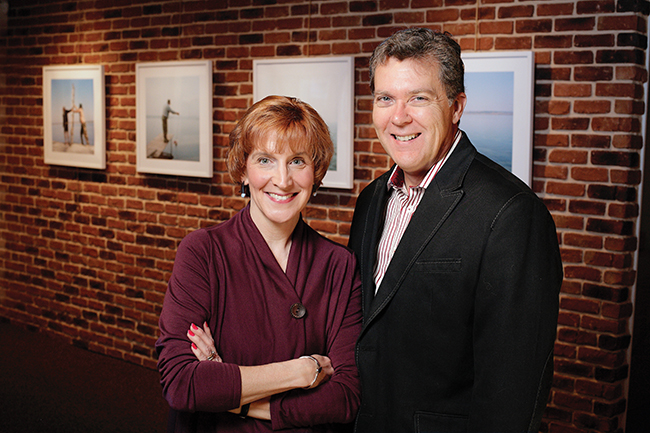
BY JEZY J. GRAY
In the age of smartphones and Instagram, anyone can play photographer. However, the rich and subtle art of photography can’t be duplicated in its full fidelity by a series of templates in a smartphone interface. The depth and nuance missing from that experience is brought into sharp focus at Pictura Gallery in downtown Bloomington.
Owners David and Martha Moore launched the gallery in 2009 to promote an art form that did not have a place of its own in Bloomington. “Photography was being shown in a lot of places around town,” David says. “Restaurants would pick it up occasionally. The bookstores would also pick it up, and the little cafés and things. But it’s kind of hard to sit down and interact with it and study it in those environments. I wanted to give photography its place — a place where you could linger and see a different story. I was really grateful that people were willing to show photography, but I wanted to show it differently.”
Showing it differently is delivering big results for Pictura. The gallery has raised its national profile in recent years by contributing to eminent art fairs in cities such as New York, Miami, Houston, and Los Angeles. “Our plan is to reach those places on a routine basis,” David says. “That’s how we’re able to have a presence in different areas of the country while being physically located here in the Midwest.”
While Pictura’s recognition continues to grow outside the Hoosier State, the gallery remains dedicated to bringing high-caliber shows to Bloomington. This fall will see an exhibit by Steve McCurry, the National Geographic photojournalist whose 1985 cover portrait of a young Afghan girl became one of the most famous images of the late 20th century. The exhibit opened August 7 and runs through September 26. “We try to do a photojournalism show once a year,” curator Lisa Woodward says. “Kind of blurring the boundaries between things that tend to get roped off from photography.”
The exhibits may change regularly, but Pictura consistently aims to showcase photography that makes contact with people’s lives. “That’s when I think art really works,” says David. “When it grabs you some way. Positively or negatively, I don’t always care. As long as we can sit down and talk about it, and say, ‘Let’s see where it takes us.’”


